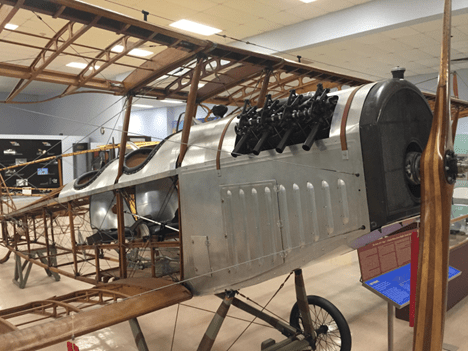
When the United States entered World War I in April 1917, the Aviation Section of the U.S. Army Signal Corps had fifty-six pilots. At the war’s end 18 months later, over 11,000 pilots had been through primary training in the United States and most learned to fly in a Curtiss JN series aircraft, or “Jenny”. Generally considered the first mass-produced aircraft manufactured in the United States, over 7,000 JN‑4 and JN-6 trainers were produced during World War I, with over 3,000 from the main Curtiss plant in Buffalo alone. According to Peter Bowers, author of Curtiss Aircraft 1907-1947, “It has been said that over 95 percent U.S. and Canadian pilots trained during World War I flew a Jenny in some phase of their training.” Rebecca Hancock Cameron, in Training to Fly: Military Flight Training 1907-1945, goes further, “The famous Jenny remained the ubiquitous primary trainer throughout the war; at some point in his career, virtually every U.S.-trained Army pilot learned to fly on the reliable airplane with its eight-cylinder, ninety-horsepower engine and dual stick control.”
So many Jennies were made in Buffalo that by the end of 1918 the Curtiss Aeroplane and Motor Corporation was the largest aircraft manufacturer in the World. The museum’s Jenny, serial number 3409, was restored to pristine condition over a number of years by members of the local Vintage Aircraft Group. They elected to leave the wings and control surfaces uncovered so visitors to could see the wire-braced wooden construction used in aircraft at that time. So please come out to the museum and see the aircraft, made in Buffalo, that trained U.S. Army Air Corps pilots for World War I.
Contributed by Walter Gordon
